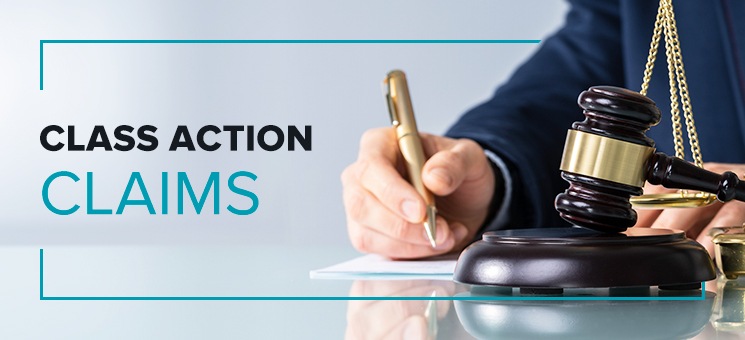Your Rights, Your Voice: The Essentials of Going After a Class Action Lawsuit
Wiki Article
Understanding Course Activity Claim: A Guide for Attorney
Course activity lawsuits have actually ended up being an important part of the lawful landscape, permitting the debt consolidation of numerous insurance claims into a solitary action. For attorneys, understanding the details of class activity litigation is essential in efficiently representing their clients. This thorough overview checks out the fundamentals of class activity suits, from identifying prospective class members to browsing the certification procedure. In addition, it looks into vital techniques for handling course activity lawsuits and gives understandings into acquiring and discussing authorization for settlements. By diving right into the complexities of class action suits, this guide gears up legal representatives with the understanding and tools required to efficiently navigate this complex area of law.The Fundamentals of Class Activity Legal Actions
Class activity legal actions are a lawful system used to consolidate comparable insurance claims from a team of individuals into a single legal action, giving a reliable and cost-efficient approach to looking for justice and resolution. This kind of lawsuit allows a representative plaintiff, acting on behalf of the whole class, to bring a claim against an offender who has actually purportedly caused harm or breached the civil liberties of numerous people.The fundamental needs for bringing a course activity legal action include numerosity, commonness, typicality, and adequacy of representation. Numerosity refers to the fact that the class should be so huge that joinder of all participants would be not practical. Commonality implies that there must be typical inquiries of regulation or fact that are shared by all participants of the class. Typicality calls for that the cases of the depictive plaintiff are regular of the insurance claims of the entire course. Last but not least, adequacy of depiction ensures that the representative plaintiff will appropriately stand for the interests of the entire course.
Course action suits can be beneficial for both defendants and complainants. For complainants, it permits them to pool their resources and share the costs and risks linked with lawsuits. It likewise offers an equal opportunity when they are up versus big corporations or entities. For defendants, it offers the opportunity to efficiently solve numerous cases in a single legal action, avoiding the requirement to resist numerous specific legal actions.
Identifying and Assessing Prospective Course Members
After establishing the standard demands for a course activity suit, the following step is to recognize and evaluate potential course participants. This procedure includes identifying that may become part of the course and assessing their cases to identify if they satisfy the needed standards.To recognize possible course participants, legal representatives usually carry out considerable study and gather relevant info. This may involve examining records, performing meetings, and examining documents to recognize people or entities that might have been impacted by the supposed misdeed. It is critical to develop a extensive and clear checklist of possible course members to guarantee that all affected parties are consisted of in the lawsuit.
As soon as possible class members have actually been determined, the next action is to evaluate their claims. This entails reviewing the merits of each specific insurance claim to identify if they satisfy the legal demands for course qualification. Legal representatives have to thoroughly evaluate the truths, evidence, and legal concepts of each prospective course participant's insurance claim to make sure that they have a feasible case.
Assessing prospective class participants also involves identifying whether they satisfy the course interpretation and have actually experienced comparable injury as an outcome of the accused's actions. This requires contrasting the facts and circumstances of each prospective class participant's scenario to the allegations and legal concepts presented in the legal action.
Navigating the Class Qualification Process
To effectively browse the course certification process, attorneys have to vigilantly stick to the step-by-step requirements stated by the court. Course qualification is an important action in a course action suit, as it establishes whether a case can proceed as a course action, representing a team of individuals that have similar cases against a defendant. The process entails pleasing particular criteria, such as numerosity, commonness, typicality, and adequacy of depiction.Firstly, attorneys must establish numerosity by showing that the class is so big that private joinder is unwise. This requires a comprehensive analysis of the defenses and cases included.
Next, attorneys need to reveal typicality, which implies that the representative complainant's claims are regular of the insurance claims of the class participants. This ensures that the rate of interests of the depictive plaintiff straighten with the rate of interests of the class. Last but not least, attorneys must show adequacy of depiction, implying that the depictive plaintiff and their advice will fairly and properly stand for the interests of the course.
To browse this process successfully, legal representatives have to completely prepare by conducting extensive study, gathering evidence, and creating a compelling debate that satisfies each of these requirements. They have to additionally be prepared to react to any objections or challenges increased by the offender. By diligently adhering to the step-by-step needs stated by the court, lawyers can boost their chances of getting course qualification and advancing the rate of interests of the course members.

Trick Approaches for Taking Care Of Course Activity Litigation
Upon successfully navigating the course accreditation procedure, legal representatives have to after that apply key approaches for successfully managing class activity litigation. These methods are critical to guarantee that the situation proceeds efficiently and efficiently, ultimately making best use of the opportunities of a beneficial end result for the course members.
One secret strategy is to establish a natural and read what he said strong lawful team (Class action lawsuit). This includes constructing a group of attorneys with experience in class action litigation, in addition to various other pertinent locations such as the details industry or topic associated with the situation. A well-rounded team can bring various viewpoints and abilities to the table, boosting the overall performance of the lawsuits
An additional vital strategy is to create a well-balanced Check This Out and comprehensive litigation plan. This strategy must describe the general objectives of the case, in addition to the certain lawful theories and arguments that will be sought. It needs to additionally consist of a timeline and budget plan to guarantee that the case remains on track and within the assigned sources.
Furthermore, attorneys ought to actively involve with the course participants throughout the lawsuits procedure (Class action lawsuit). This includes supplying routine updates on the development of the situation, looking for input and responses from the course members, and dealing with any type of concerns or concerns they may have. By promoting open interaction and collaboration, legal representatives can build trust and support among the class members, which can be critical in achieving a successful resolution
Working Out Course Activity Claims: Settlement and Approval
When it comes to resolving course action legal actions, reliable arrangement and getting approval are vital action in achieving a resolution. Class action suits are complicated and involve a a great deal of plaintiffs, making it essential to get to a settlement that is satisfactory and fair to all celebrations involved.
Once a negotiation arrangement is reached, it needs to be accepted by the court. The court's duty in this process is to ensure that the negotiation is reasonable, reasonable, and appropriately protects the passions of the class members. The court will certainly consider factors such as the nature of the cases, the toughness of the proof, the potential healing for the class members, and see it here any kind of arguments increased by class members.
Obtaining court authorization is critical as it gives finality to the negotiation and protects the rate of interests of the class participants. It makes sure that the negotiation is binding and enforceable, and course participants can get their rightful payment.
Final Thought

Course activity claims have come to be an important part of the lawful landscape, allowing for the debt consolidation of numerous insurance claims into a solitary action. Class certification is a critical action in a class activity suit, as it determines whether a situation can continue as a class activity, representing a team of individuals who have comparable insurance claims versus a defendant. By carefully adhering to the step-by-step needs set forth by the court, legal representatives can enhance their opportunities of obtaining course qualification and advancing the passions of the course members.
The court will certainly take into consideration elements such as the nature of the cases, the strength of the evidence, the possible recovery for the class participants, and any objections elevated by course members.
By determining and analyzing potential class participants, legal representatives can identify the feasibility of a course action claim.
Report this wiki page